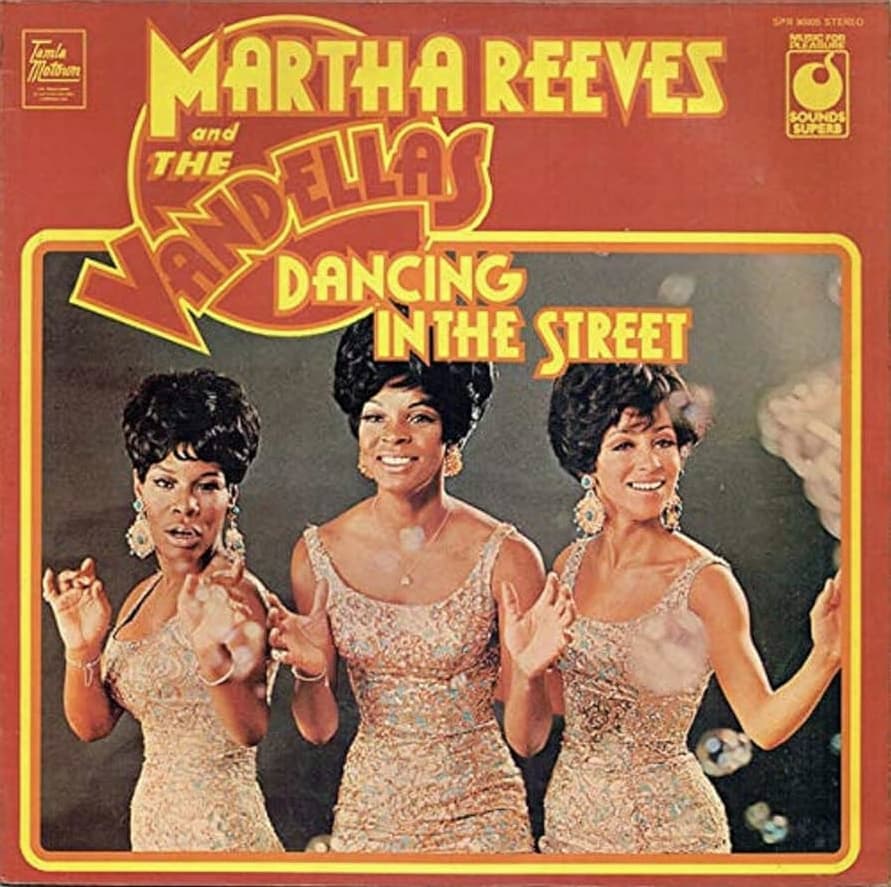
“Dancing in the Street” by Martha and the Vandellas: A Timeless Anthem of Joy and Change
“Dancing in the Street” is a song that resonates with multiple generations, blending infectious rhythms with a spirit of joyous rebellion. Written by Marvin Gaye, William Stevenson, and Ivy Jo Hunter, the song first took the world by storm in 1964 when recorded by Martha and the Vandellas. This version soared to No. 2 on the Billboard Hot 100 chart, staying there for two weeks and trailing only behind “Do Wah Diddy Diddy” by Manfred Mann. The song also achieved significant success across the Atlantic, peaking at No. 4 on the UK Singles Chart. As one of Motown’s signature songs, it not only marked a high point in the group’s career but also became emblematic of the era’s vibrant musical landscape.
Initially, Martha Reeves was skeptical about the song, finding it repetitive. However, with some adjustments and the creative input of Gaye, Stevenson, and newcomer Ivy Jo Hunter, the song evolved into a celebration of urban life and community spirit. Reeves transformed the romantic undertones of Gaye’s original delivery into a call for public celebration, envisioning the festive atmospheres of block parties and Mardi Gras. Recorded in just two takes, “Dancing in the Street” captures an exuberant energy that was immediate and electric. The lyrics, specifically mentioning Detroit as “the Motor City,” helped cement its connection to the city’s vibrant cultural scene.
The song’s lyrics paint a vivid picture of spontaneous, joyful gatherings in cities across the United States, from Chicago to New Orleans, New York City, Philadelphia, Baltimore, Washington, D.C., Los Angeles, and, of course, Detroit. This universality contributed to the song’s enduring appeal, making it a symbol of unity and communal joy.
Beyond its musical success, “Dancing in the Street” also held significant social and political implications. During the 1960s, Motown Records played a crucial role in reflecting and shaping the African American experience in urban northern communities. The song became an anthem within the civil rights movement, its message interpreted as a call for action and solidarity among suppressed minorities. It captured the urgency and hope of a community striving for freedom and equality, blending its festive tones with deeper, resonant undertones of social change.
Critically acclaimed, the song was described by Cash Box as “an infectious romp” and praised for its vibrant production. Its enduring legacy was further cemented when it was selected for preservation in the Library of Congress’s National Recording Registry in 2006. This honor reflected its cultural, historical, and aesthetic significance, ensuring that future generations would continue to experience its powerful message.
Over the years, “Dancing in the Street” has seen numerous covers by artists across genres, each bringing their unique flair to the classic. Notable renditions include a 1966 version by The Mamas & the Papas, a 1982 cover by Van Halen that reached No. 38 on the Hot 100 chart, and a 1985 duet by David Bowie and Mick Jagger that topped the UK charts and peaked at No. 7 in the US. Other artists like The Kinks, Grateful Dead, and Myra have also paid tribute to this timeless track.
In 1999, “Dancing in the Street” by Martha and the Vandellas was inducted into the Grammy Hall of Fame, further solidifying its status as a pivotal piece of American musical history. Billboard also honored it, ranking it No. 29 on their list of 100 Greatest Girl Group Songs of All Time.
Decades after its release, “Dancing in the Street” remains a vibrant reminder of music’s power to unite, uplift, and inspire. Whether as a backdrop to festive gatherings or a poignant symbol of social change, this song continues to make listeners want to get up and dance, celebrating the unbreakable spirit of community and joy.